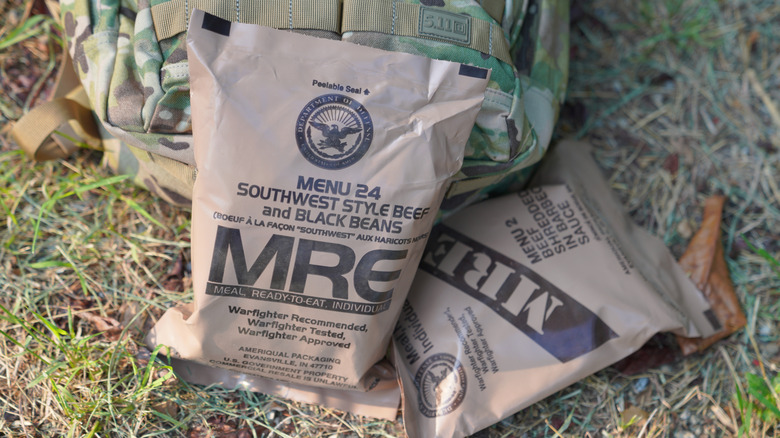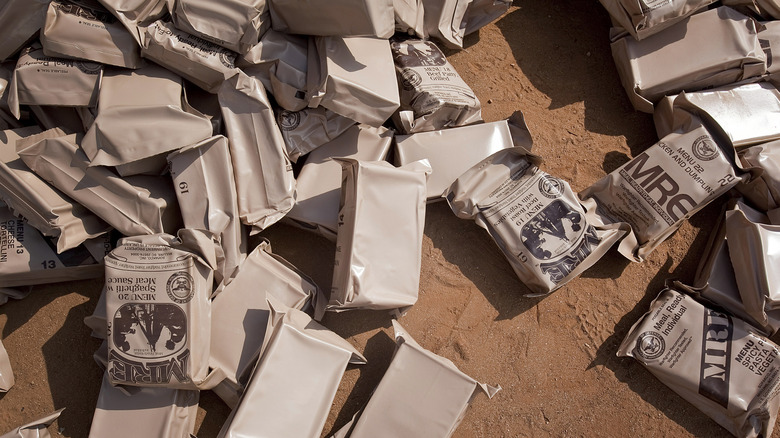How Long Do Military MREs Actually Last?
If you find anything with the word "military-grade" tacked onto it, odds are good that it could survive anything. Sure, veterans often joke that anything military-grade is made by the lowest bidder, but the U.S.'s current system of field rations, called Meal, Ready-to-Eat (MREs), has more than earned its reputation. Since 1975, it's more or less become the standard for portable, long-lasting food, replacing the canned C-ration that came before it. Each MRE is an entire meal in a pouch, with each item individually shrink-wrapped or in plastic bags for maximum shelf life. If you've got one tucked away in your emergency kit or hiking pack right now, you may be curious about how long it'd actually last.
The official answer can be found printed on the back of the package. Typically, the expiration date is three to five years from the date of production. But there's a catch: this is assuming you're storing it in ideal conditions, which is in a cool pantry at 50 degrees Fahrenheit. Stored elsewhere hotter, like a car's trunk on a hot summer day, and its expected shelf life will plummet. At 120 degrees Fahrenheit, for instance, your MRE will last about a month.
Since 1997, the military has included a handy feature on cases of MREs to let soldiers monitor the status of their food. Called a "time-temperature indicator," this sticker features two circles that change color over time and with heat exposure. When the inner circle is as dark (or darker) than the outer one, your meal has officially expired.
What's the practical shelf-life of an MRE?
The printed date and the sticker are only "paper" expiry dates. After this date, you should treat the content inside the bag with an extra ounce of caution. Even so, that doesn't necessarily mean they're all inedible. In fact, one popular YouTuber, Steve1989MREInfo, who reviews old military rations, has tasted MREs produced even as far back as 1993. Surprisingly, short of a rancid packet of cheese spread, everything was still perfectly edible, from the omelet with ham entrée to the 32-year-old Mars candy bar.
Unfortunately, this YouTuber's success doesn't guarantee your safety if you were to buy vintage MREs off the grey market and crack them open for taste tests (buying and selling authentic military MREs are technically illegal, since they're considered government property). If improperly stored, the combo of humidity, heat, and time would sap most of their flavor and nutrients. In the worst-case scenario, if the package is damaged or punctured (which may not be uncommon), you're essentially playing food poisoning roulette.
That's why tasting ancient MREs is a niche hobby, reserved for folks who know exactly what they're getting into. If what you're after is safe, shelf-stable meals for emergencies or off-grid chowing, try building your own emergency food supply, buy camping meals from trusted brands, or, at the very least, secure some highly-ranked MRE menus that are still within their use-by dates. After all, food poisoning is the last thing you'd want to deal with during an emergency.

